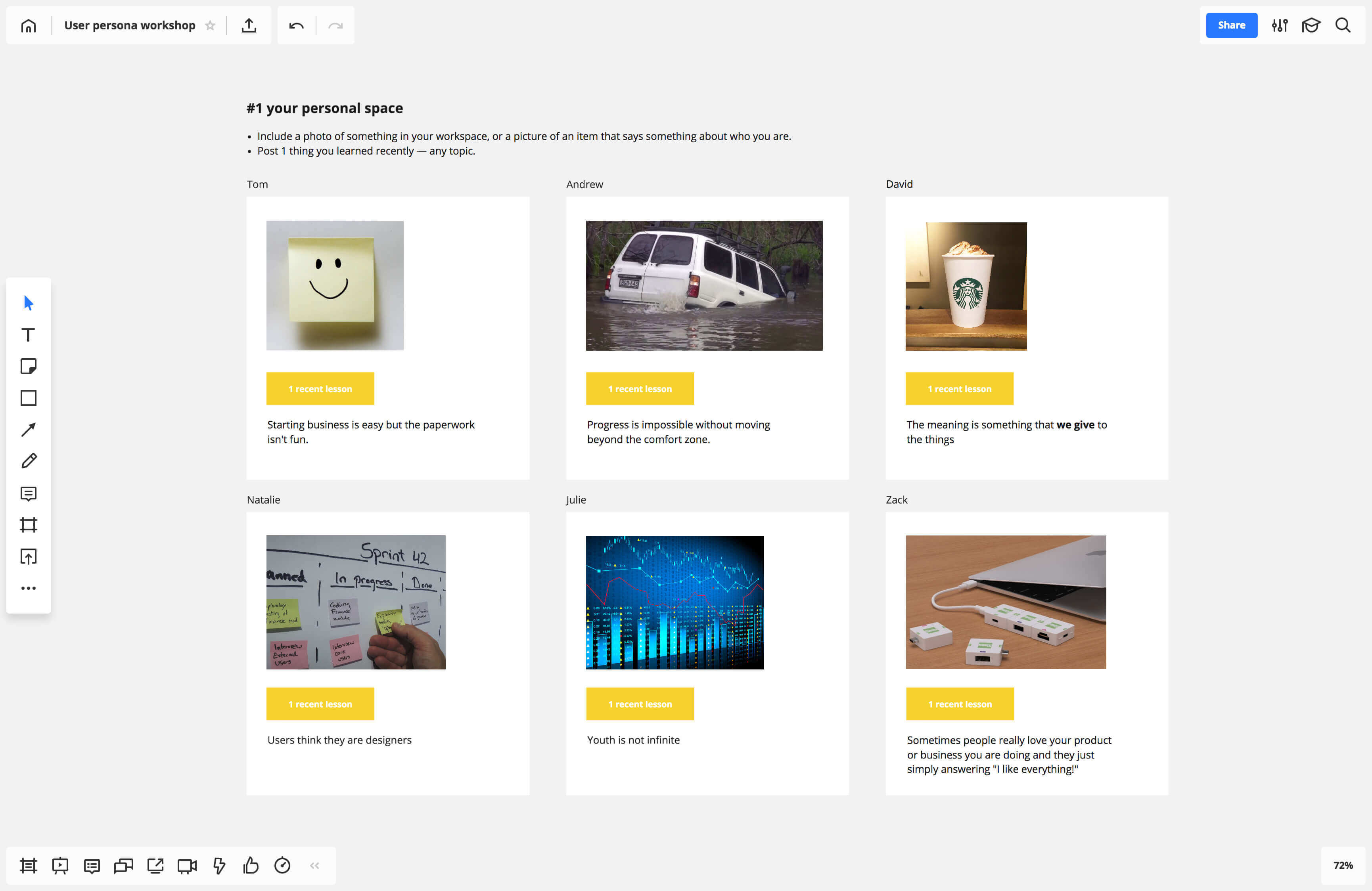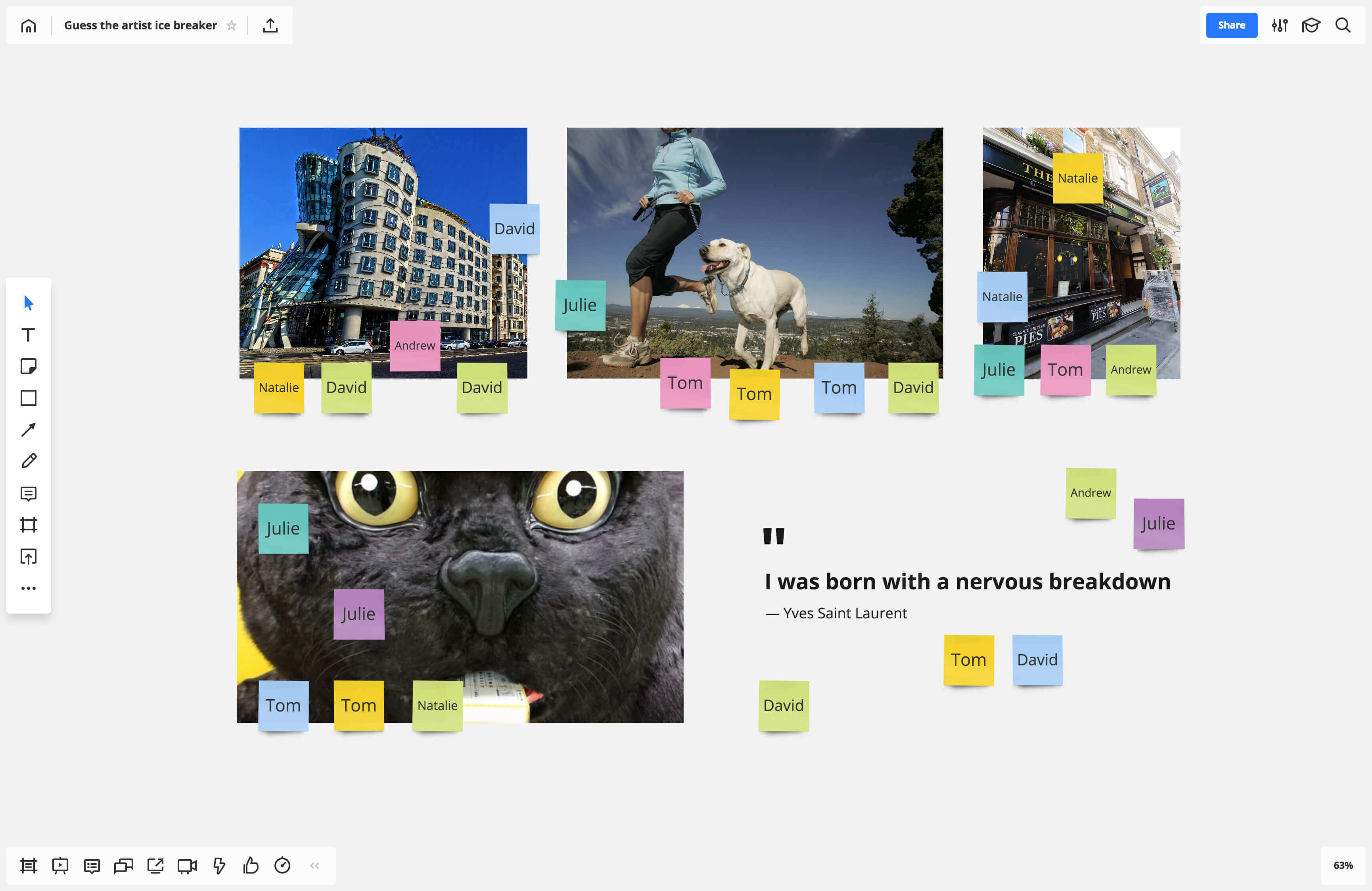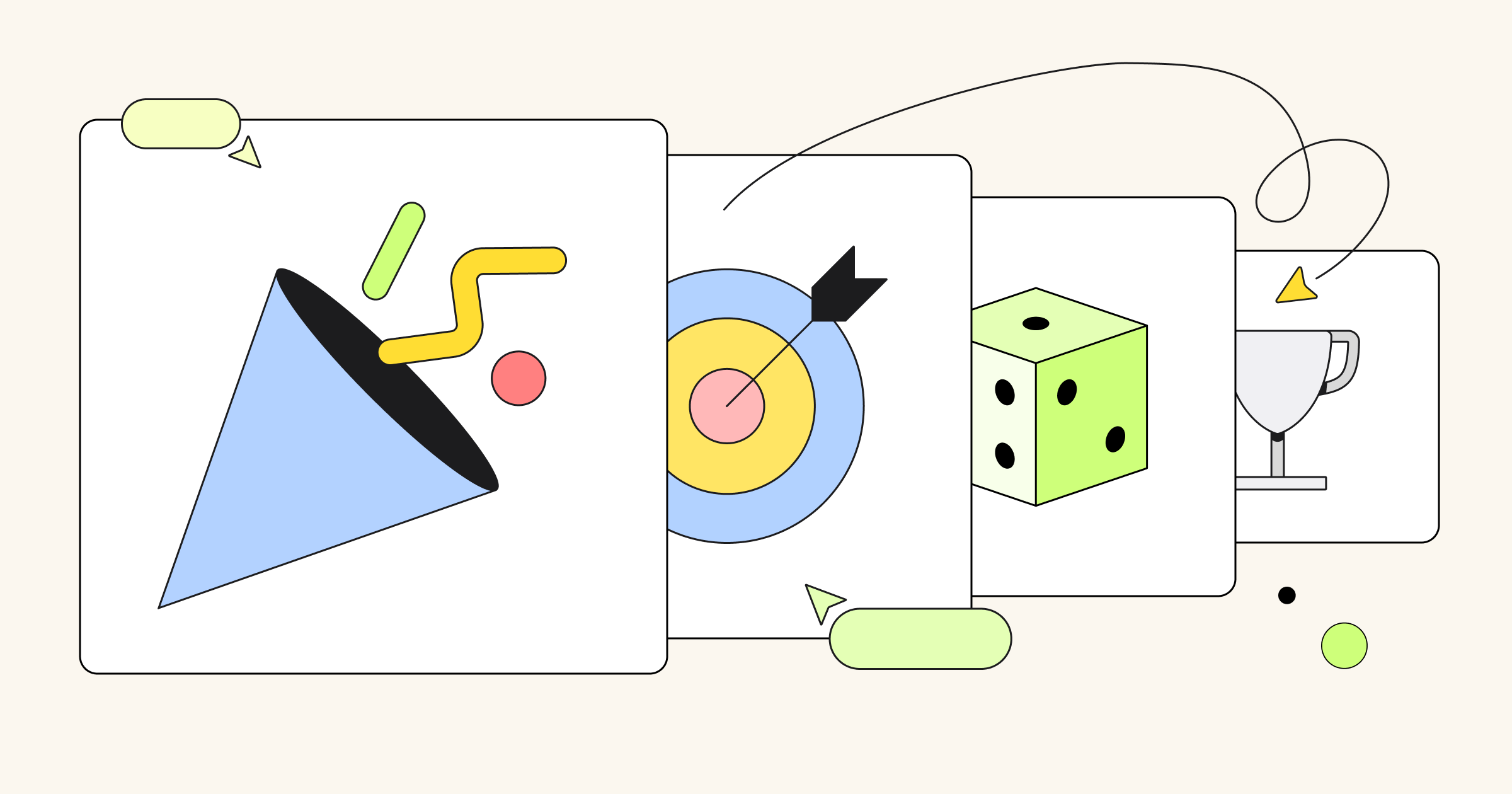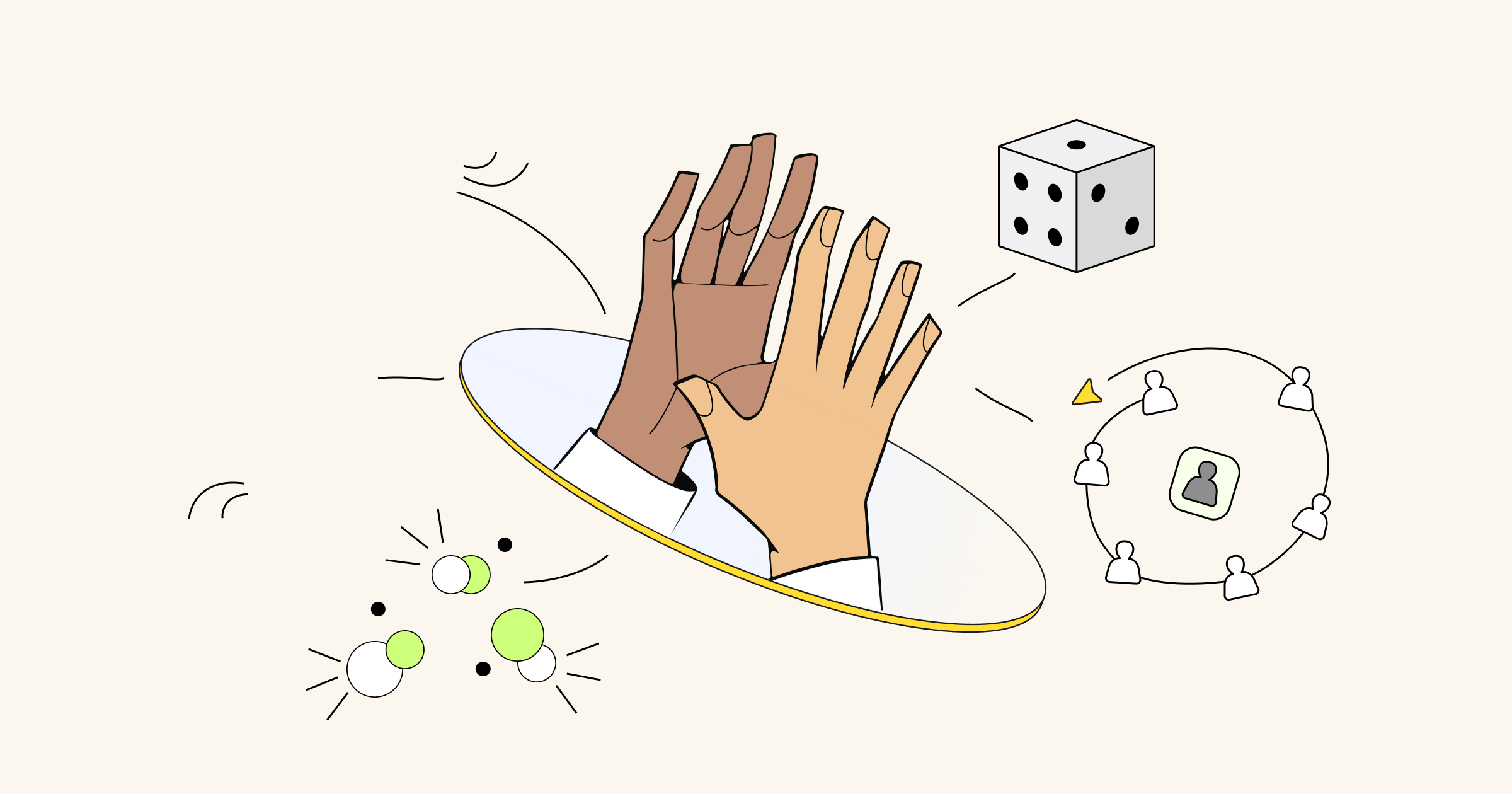Icebreakers are a fantastic way to get team members acquainted with each other—especially if teams work remotely or there are new faces in the office. We often spend more time with our coworkers than family or friends. But teams don’t always know the best icebreaker questions or games. You can use these simple team-building activities to quickly help diffuse anxiety or awkward silences in meetings. Ice breakers are especially valuable for remote teams that conduct virtual meetings via video conferencing since team building is even harder when the whole team is distributed. Read on to find out how easy it is to create funny, insightful, and meaningful icebreakers.
What are icebreakers?
Icebreakers are team-building exercises that aim to bond team members and facilitate collaborative work. They can ease team cohesion and even boost friendship and goodwill among the group. They can be questions that elicit profound answers, or fun games that help small groups connect through laughter.
Why businesses consistently use
icebreakers
Every organization can benefit from simple and fun icebreaker activities. These team-building events can help whether you have a new team, welcome a new team member, or just want to work more closely together and facilitate team bonding. The best icebreakers allow attendees to warm up, understand each other, and face work challenges as a team. They are also super useful when you are starting remote meetings — they help the team bond and get ready for the task at hand.
Here is how you can use icebreaking games in your team:
To get to know each other
Getting to know your coworkers can be a powerful catalyst for better work results. Icebreakers are a lot more fun than just having everybody introduce themselves. They can help your team learn everyone’s names, understand each other’s backgrounds and interests, and then start a meaningful conversation.
To break down the “work” barrier
Many coworkers only interact with each other in a formal setting, which can lack the personal and human depth of regular conversation. Interactive icebreakers can significantly connect team members and help them feel more comfortable around each other. Humor and personal connection have long been used to “break the ice” in social settings. Laughter and sharing help us relax, whether we’re in the same room together or half a world away.
To interact with new faces
New member on the team? Maybe there’s a whole new team? An icebreaker can speed up the cohesion process so people feel comfortable and ready to work with each other. Interacting with new coworkers can be intimidating and challenging, but bonding over interests like sports or pop culture or family similarities comes easily using icebreaker questions and games.
To bond as a team
Icebreakers also provide a great opportunity for participants to voice expectations and concerns, and address the topics of meetings. They open up, empathize with their colleagues, and work together better. Icebreakers are a proven way to focus and motivate the team.
To encourage creative thinking
Icebreaker games help creativity to flourish. Coming up with fun stories instead of just following a meeting agenda sets the tone for the rest of the meeting. Participants are more likely to come up with good ideas, be more creatively confident, and express themselves without fear.
Icebreakers are more important than ever
Icebreakers are especially important for virtual teams that can’t all physically interact with each other. They can reduce the inherent challenges of working in distributed teams in a fun, easy way. Remote team members may not know one another, and may not have shared office space or personal interactions. But a quick virtual icebreaker activity can start things off right!
12 great icebreaker questions to ask in groups
Icebreaker questions can be fun or funny, deep and meaningful—or both. People’s answers can be surprising indicators of values and personality. They can also show team members’ work styles, and how they collaborate with colleagues.
Here’s the full list of icebreaker questions:
1. What was your favorite childhood movie?
2. What is one item you couldn’t live without?
3. If you could only eat one food for the rest of your life, what would it be?
4. If you were an animal, what kind would you be?
5. If you could have dinner with anybody in history, dead or alive, who would it be, and why?
6. What unusual or quirky things do you do regularly?
7. What’s your favorite 80s movie?
8. What’s your unusual talent?
9. If you were stranded on a desert island, what band or music would you want?
10. If you could travel anywhere in the world, where would you go?
11. What’s your biggest guilty pleasure?
12. What’s the greatest challenge you overcame?
1. What was your favorite childhood movie?
What did the movie make you think and feel at the time? This question can show what makes experiences memorable to the participant.
2. What is one item you couldn’t live without?
What made you choose that item? This is a great question to ask because it shows what participants value. It can also provide opportunities to discuss use and design.
3. If you could only eat one food for the rest of your life, what would it be?
Answers to this question can reveal the breadth of participants’ tastes. They can also reveal how well they tolerate regular routines.
4. If you were an animal what would you be?
This is a great question because choosing an animal to identify with can reveal participants’ thoughts on what traits these animals have. Why are these traits desirable? How do they relate to us humans?
5. If you could have dinner with anybody in history, dead or alive, who would it be, and why?
By choosing a historical, literary, artistic, political, sports, or entertainment figure, this question shows the characteristics and achievements participants value. What is it about this person that inspires you?
6. What unusual or quirky things do you do regularly?
This probing question can show self-confidence in revealing vulnerabilities. It can also reveal characteristics uniquely suited to solving workplace issues.
7. What’s your favorite ’80s movie?
This question can show how participants spend time outside of work. Also, it can show their lighter sides, as well as how seriously they take themselves.
8. What’s your unusual talent?
What do you do better than anyone you know? This question can reveal how participants view themselves, and their strengths.
9. If you were stranded on a desert island, what band or music would you want?
Do you play music? This is a great question to find out people’s tastes and hobbies outside of work.
10. If you could travel anywhere in the world, where would you go?
This question can reveal people’s breadth of travel and experience. In addition, it can show their openness to new cultures and people.
11. What’s your biggest guilty pleasure?
Answers to this question can reveal much about people’s values. It also can show how comfortable they are sharing their weaknesses.
12. What’s the greatest challenge you overcame?
What did you learn from it? People’s answers to this show their resilience, diligence, and perseverance.
10 great icebreaker games
Icebreaker games can be a fun way to refine goals and dissolve monotony in meetings. Employees may come in already stressed about work tasks. Using tools as simple as a piece of paper, a whiteboard, or a shared document, these quick games can help team members motivate and focus ahead.
Here’s the list of icebreakers games you can try:
1. Rock paper scissors tournament
2. Interview a partner for 5 minutes and then tell the group about them
3. Aliens have landed
4. The birth map
5. Mindfulness icebreaker
6. Two truths and a lie
7. A picture of your life
8. 10 common things
9. Scavenger hunt
10. Guess the artist
11. Marshmallow challenge
12. Line up
13. One-word exercise
14. Flat lay your desk
15. A tour guide
1. Rock paper scissors tournament
This twist on the classic game is played by two people. The losers of each game then go on to cheer for the winners who go on to the next rounds, until the final two compete to the cheers of everyone. It can show people’s reflexes, responsiveness, and spontaneity, and can even be a springboard for brainstorming. The game energizes the team and emphasizes teamwork and collaboration.
2. Interview a partner for 5 minutes and then tell the group about them
Ask about their hobbies, what especially stimulates or challenges them at work, and other important interests in their lives. Switch places and do the same for your partner. This game highlights listening and communication skills and can help team members discover common interests with one another.
3. Aliens have landed
This icebreaker can be useful for teams with remote participants with language and cultural differences. Tell the group to imagine aliens have landed on Earth and want to learn about your company. But since they don’t speak your language or understand your product, it needs to be explained with five symbols or pictures. Ask each participant to upload five simple images that best describe and communicate your company’s products and culture to a shared document/folder. Take a few minutes and look at all the images. Are there common themes? Aliens Have Landed is a great game to play to break the ice with your remote team.
4. The home map
This is especially great for international teams. Print a map of the world or upload it to a shared document or visual workspace, like Miro. At the beginning of your meeting, ask everyone on your team to put a sticker or a pin on the map to show where they’re from. Then encourage everyone to share a short story about what they love most about that place. If they traveled around growing up, as which place they loved the most.
This great activity shows the diversity of voices represented on your team. It allows people to share their cultural values and reveals what everyone shares, no matter where in the world they live.
5. Mindfulness icebreaker
Participants write down ideas, thoughts, or feelings they’ve brought to the meeting. People often enter meetings stressed about tasks they’re working on or other issues. This helps them check in with themselves, and process these thoughts and feelings. They then rip up their answers, which allows them to maintain their privacy, and then focus on group tasks ahead.
6. Two truths and a lie
This popular game has team members guess which of your three statements is a lie. It can encourage colleagues to pay close attention to your personal traits and stories. As well as attention to detail, it also encourages focus on consistency.
7. A picture of your life
Add every member of the team to a shared document or an visual workspace before the meeting begins, and ask them to post a picture of something from their life. It can be anything that will tell a story about who each member is or how they work: a picture of the shoes each member is wearing, the view out their window or a photo of their desk. Then ask them to share the story behind their picture.
Here at Miro, we used this icebreaker game before a remote workshop about User Personas. The task was to share a picture of something on your desk that tells a story about who you are or how you work. In addition to this, we shared one thing we learned recently. It was fun and surprising in some cases, allowing us to get to know each other more and set the casual atmosphere we needed for the workshop.

8. 10 common things
This game is good for starting a brainstorming session. Divide your team into small groups and ask them to come up with a list of 10 things they have in common. If you prefer to keep the topic more business-oriented, limit the list to work or industry-related topics.
It can be as simple as, “We all wear shoes,” to something more specific like, “We were all hired in 2020.” Regardless of the answers, it will create a bond, generate discussion and laughter, and get the group thinking creatively. Allow time for each group of remote workers to share their list with the larger team in the visual workspace. This will create an electric, dynamic atmosphere, well suited to brainstorming.
9. Scavenger hunt
This versatile game often has fond childhood associations and can be done anywhere, whether in the office or outside. In many creative ways, it uses a variety of skills, strategic thinking, and problem-solving methods, to find the hidden items. It can especially help people who might have different styles or don’t normally work together and bond together as a team.
10. Guess the artist
Before your meeting, ask every remote employee to create an image or find a picture they can use to tell a unique story or fact about their lives. Everyone should upload their images to a visual workspace in advance. At the beginning of the meeting, everyone puts stickers on each image, guessing who each picture belongs to. Then you can start to figure out together which picture belongs to which person. When a correct guess is made, that person needs to share their story with the group. Include a video for the storytelling so everyone can connect the name, face, and story.
When a correct guess is made, that person needs to share their story with the group.

11. Marshmallow challenge
This well-known icebreaker game has teams build the tallest free-standing structure out of dry spaghetti, tape, string, and a marshmallow (which must be on top). It emphasizes group communication, leadership dynamics, collaboration, innovation, and problem-solving strategy.
12. Line up
In this game, participants must quickly line up without any written or verbal cues, or any other help. The criteria are predetermined and include factors such as height, hair color, or eye color. This game encourages nonverbal communication and teamwork, and tasks get more complicated as the team grows closer.
13. One-word exercise
Starting from your designated meeting topic, pick a phrase that relates to the central theme. Have participants write down a word that they associate with it. This game allows everyone to share hesitations and expectations, and then focus on the task ahead.
14. Flat lay your desk
This is a remote team-building exercise we picked up from 6Q team. “You could get your team members to take a flat lay of their desk and share it with the rest during your team meetings,” they suggest, adding, “A flat lay is basically a photo of items from directly above, and these items are usually arranged or styled on a flat surface.” Sharing the story behind an object can also be a good way to learn more about your colleagues’ personalities.
15. A tour guide
When your team members are remote, it can be a great idea to schedule an actual tour of each remote employee’s location! They can show their office space, guide the team through their home, or co-working space, or, if technology allows, livestream from a place they love in their city or town. You can use a live streaming service or a social network like Snapchat or Instagram. This exercise is great for building empathy and giving each remote team member some context to understand their colleagues’ backgrounds (particularly great for international teams). Just make sure your team is on board and has access to the technology needed to do this game before attempting.
To learn more, check out Miro’s Icebreaker Game Guide
Create icebreakers for your team
Personal interactions are the key to building positive relationships and results. By facilitating strong connections with colleagues, you can increase employee fulfillment and ensure success at work. Icebreakers can work for any type of organization. Best of all, they don’t have to be complicated. With the Miro Icebreaker Template, you can make them easily!
How Miro helps remote teams collaborate
The greatest projects are created when teams collaborate, and when individuals can share their creativity with ease. Miro’s visual workspace and templates and tools help create the most amazing products faster, by allowing remote teams to quickly understand how best to work together.
Whether you are an agile product team, UX and UI designer, project leader, marketer, or developer, you can collaborate with your distributed team in real time — just as if you were in the same room. You can use the infinite canvas and a wide range of tools to organize your teamwork in a visual way:
- Сreate agile boards (user story maps and retrospectives)
- Manage backlog
- Brainstorm and organize ideas
- Create wireframes and mockups
- Collect references
- Create flowcharts and diagrams
- Get feedback on visuals
- Work with sticky notes
You can also use collaboration features like simple sharing options, real-time collaboration, mentions, comments, and integration with Slack, JIRA, Google Drive, and other tools. Join thousands of businesses that use Miro to boost collaboration!


